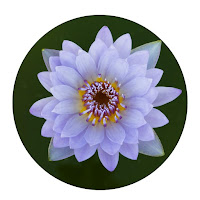During one of my healing circles, I decided to introduce the Blue Lotus Flower. There were already many conversations about this tea and one can buy it from a speciality tea shop or order them online. The quality of the tea is dependent on the cleanliness of how the flowers have been collected and packaged.
Channelled message from Kuan Yin and the White Dragon
When we opened the circle, the White Dragon appeared. He shared that he has been the guardian of the magic of the Blue Lotus flower for thousands of years, not wanting people to abuse the magic of the flower.The flower has medicinal qualities and it works to restore our connection to our divinity. It reminds us of universal love and that is a powerful healing energy. It works to open our third eye and deepen our understanding of the cosmos.
Kuan Yin came forth to share how both the White Dragon had been the keepers and guardians of the Blue Lotus flowers and how it was used during the time of ancient Egypt. She is very glad that we will be tapping into the sacred properties of the flowers to help us in our spiritual growth and journey.
How to work with Blue Lotus Flower
- steep the dried petals or 3-4 whole flower in hot water (around 76 degree celsius) for around 7-10min before drinking (https://www.tiktok.com/@majestytwong/video/7007406612851870978?is_copy_url=1&is_from_webapp=v1)
- smoke it (the petals and the bulb)
- Burn it as an incense
- infused into the massage oil
- infuse it in wine
Effects of using the flower:
- The flower has sedative properties that help with sleep, lower anxiety levels and for some, it may also have some aphrodisiac effects
- Smoking it and drinking the wine that the flower has been infused in, may have some hallucinogenic effects
- It has Apormorphine which is a drug with many medicinal uses - it is a nonselective dopamine receptor agonist and activates serotonin receptors and α-adrenergic receptors. It has been used as a sedative-hypnotic since the late 1800s to treat insomnia, depression, or schizophrenia. It has been used in the treatment of erectile dysfunction and was sold under the trade name Upriama and Ixense. In 1951, it was reported to successfully treat Parkinson’s disease at a subcutaneous dose of 0.5 to 1.0 mg. It has also been used in the treatment of alcohol and morphine addiction. In veterinary medicine, it has been used to induce vomiting. It has also been suggested that apomorphine can play a role in the treatment of Alzheimer’s disease (https://www.ncbi.nlm.nih.gov/pmc/articles/PMC5638439/)
- some people experience lucid dreaming after drinking the tea



